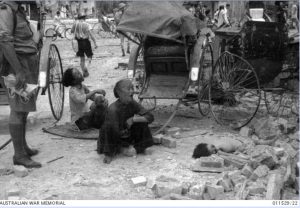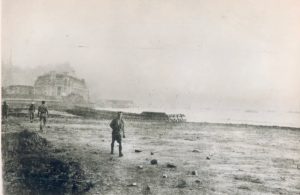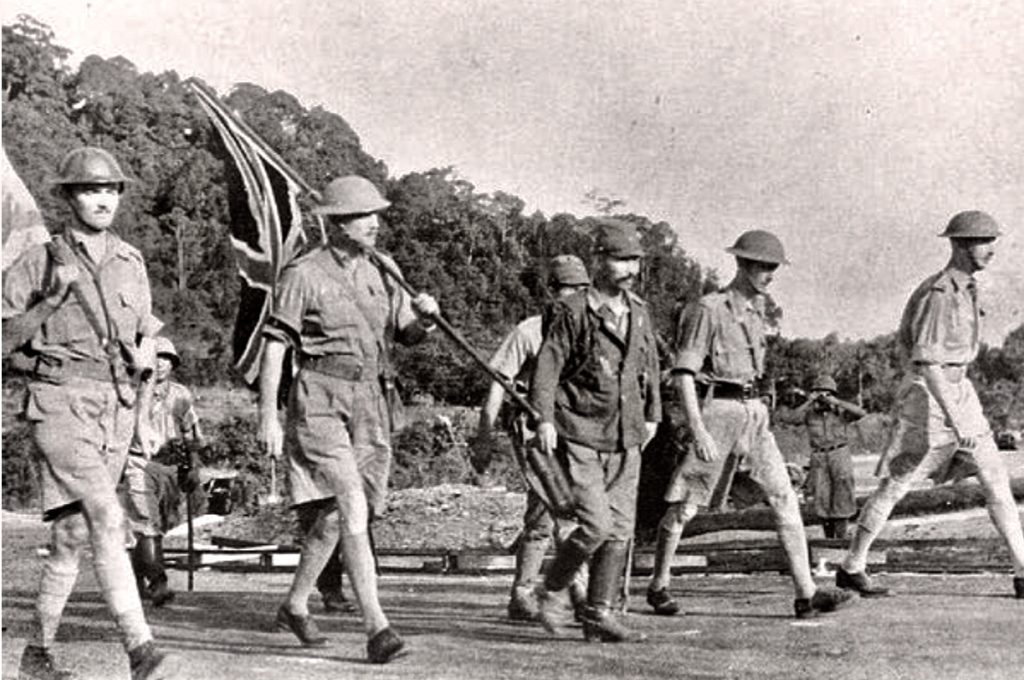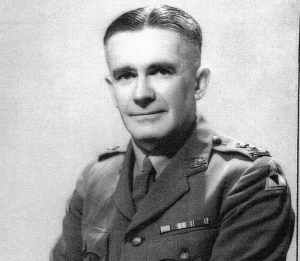
Above: The terrible loss and pain of war.

Below: Black smoke over Singapore – Fuel stocks burning.


Above: 16 Feb 1942 day after Capitulation shows Keppell Harbour in background.
At 8.30pm on 15 February 1942 at Singapore, over 130,000 troops, including 15,000 Australians, were surrendered to the Japanese.

On this 83rd anniversary we remember thousands of young Australian men, in the prime of their lives ordered to lay down their arms. Japan had won – they with British and Indians had surrendered!
2/4th men in particular, were not happy! They could not understand the surrender – they wanted to keep fighting. But for those who had fought against the Japanese all their way down the Malay Peninsula then in Singapore – they knew. Their numbers were badly depleted, their mates had died or were left behind and, their officers knew of the military bungles which had taken place.
What now? Stunned, they stood around in gatherings. (They would learn about 125 men from 2/4th had been KIA or DOW.)
What would happen to them? The English, Australians and Indian troops?
Who had survived and who had not? They had left wounded mates behind. Was their sacrifice for nothing?
What about their families at home? When would they learn of the men’s fate? Who would take care of them?
Would Japan continue its advance into Australia?
Married men worried about their wives and children.
They hadn’t then considered the local population and what would happen to them?
What lay ahead of our men?
They learned their Commanding Officer Lt-Col Michael Anketell had DOW at Alexander Hospital on 13 Feb 1942 at Alexander Hospital aged 51 years.

They would also learn their Australian military leader, Major-General Gordon Bennett, General Officer Commanding AIF Malaya was also missing. Bennett should have accompanied Lt. General Percival to the Surrender negotiations, had left Singapore!

1,789 Australian soldiers had been killed since 8th Division had entered the fray in Malaya in mid-January and 7,000 of those captured would die before the war’s end.
Some 14,972 Australians were taken POWs at the Fall of Singapore. On 17 Feb 1942 they were marched 17 miles to Selarang Barracks, Changi watched by their captors standing on the sides of the road, many had lost belongings, some had light wounds and too many were without water or provisions. The men crowded into very cramped accommodation.
(Occasionally Chinese families had thrown the men and civilians a drink or a little food as they walked in the heat without water to Changi – consequences for Chinese courage was to be savagely beaten by rifle butts – this brutality towards Singapore’s Chinese population continued throughout the war.)
Singapore would be renamed Syonan-to (“Light of the South”) by its new masters.

Above: Selarang Barracks pre war.

Above: Selarang Barracks overcrowded Feb 1942.
